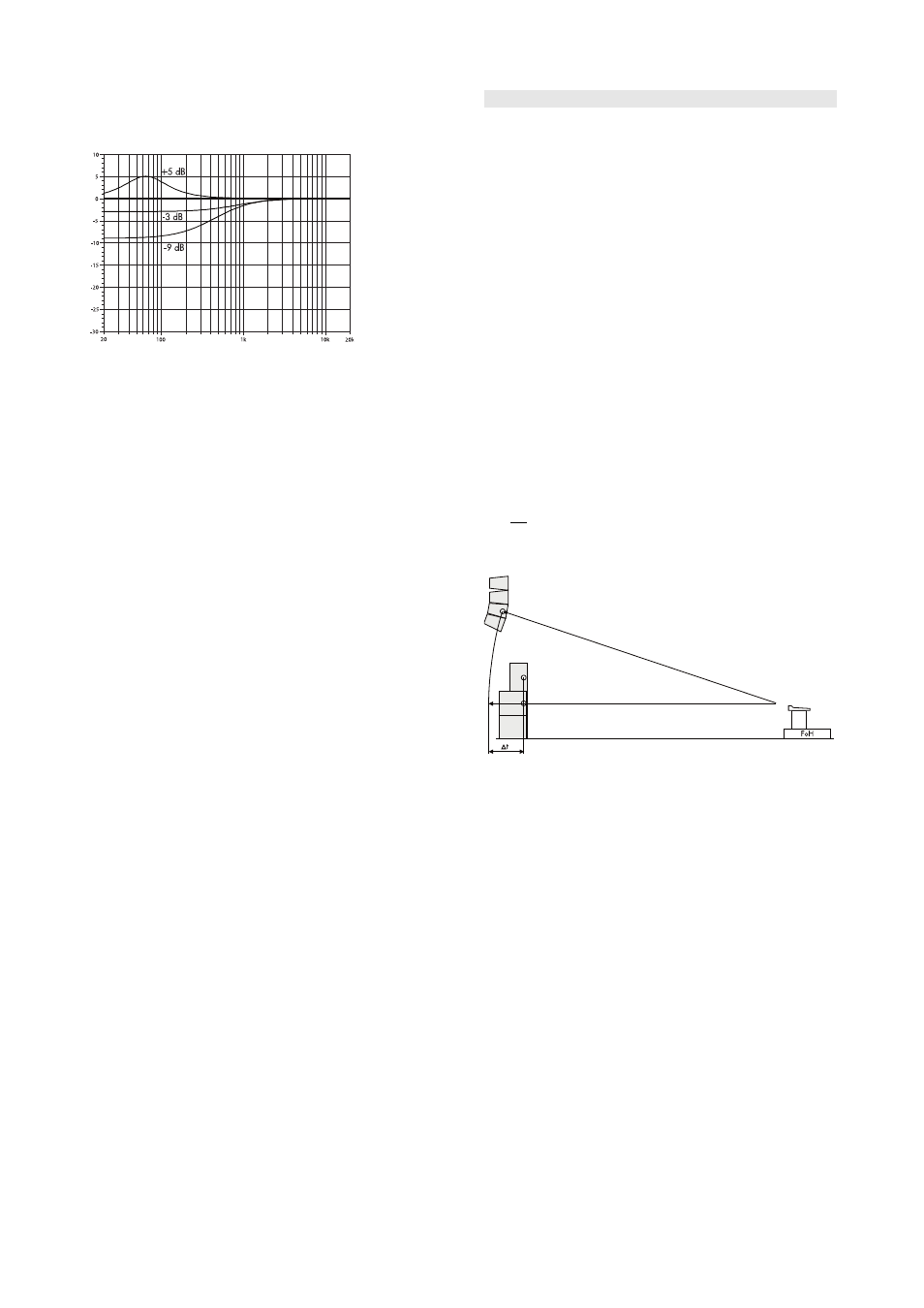19 time alignment, 1 subwoofers, 2 nearfills – d&b TI 385 d&b Line array design User Manual
Page 46

This is useful when small arrays without additional
subwoofers are used for full-range coverage. Positive CPL
will reduce system headroom.
Frequency response correction of the Q-Series
CPL circuit
CPL for point sources
For point sources, CPL compensates for coupling effects
resulting from cabinets mounted close to acoustic
boundaries, such as walls or rigid ceilings.
10.19 Time alignment
Within a line array column it is absolutely essential to
maintain perfect time alignment, otherwise the whole
principle of creating a coherent wavefront will fail.
Therefore, all amplifiers used to drive one column must be
fed from the same input signal. Should a delay for the
complete line array be necessary, the delay function in the
amplifier channels can be used. The setting must be
identical for all amplifier channels used in the column.
10.19.1 Subwoofers
A correct time alignment of subwoofers to the main line
array is very important. If the required delay settings cannot
be calculated using ArrayCalc (unknown geometry of the
setup, unknown latency of devices in the signal chain), an
acoustic measurement system should be used.
The signal arrival at the FoH position can be used as a
reference for time alignment.
In the following example the subwoofer amplifiers have to
be set to a delay time of Dt, equivalent to the physical offset
Dx divided by the speed of sound (343 m/s or 1126 ft/s).
∆ t =
∆ x
v
s ound
Time alignment of ground stacked cabinets
Note: An automatic time alignment using impulse
responses - sometimes called "delay finder" – cannot
provide correct results when systems cover different
frequency bands, as this is the case with line array
cabinets and subwoofers.
Therefore use the response of the flown array and a full-
range speaker placed on top of the subwoofer (e.g.
nearfill) to determine the delay setting.
10.19.2 Nearfills
If nearfill loudspeakers are placed on top of subwoofer
cabinets, the respective amplifier channels have to be set to
the same delay value as the subwoofer.
When applying SUB arrays with extensive delay settings to
form the wavefront, equal delay settings of nearfill speakers
placed on top of the subwoofers may not allow for correct
source imaging in some positions. In this case, the correct
timing of the nearfill speaker is of greater importance and a
possible local phase mismatch to the subwoofer is
acceptable.
TI 385 (6.0 EN) d&b Line array design, ArrayCalc V8.x
Page 46 of 54
